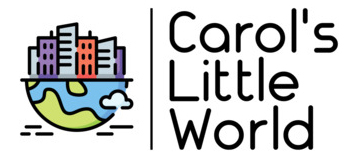Today’s topic for discussion is depth perception. How do we emulate depth in flat work? How do we make photos seem to jump off the page or paintings really have that “zing” and appear to fly off the wall? It’s not always as easy as it appears.
Photographers can use “tricks” here like focus, leading lines, and the like, to give work some depth. Likewise painters often use tints and tones, lightening or darkening an area to make it look like it’s coming forward or receding back into the ground. Then there’s also the matter of scale. Like the good car mirror says, “objects in mirror are closer than they appear” both artists and photographers can use scale to give a piece depth. Making something smaller relegates it more to the background while larger object tend to “jump” forward more.
As an artist, I’ve always been fascinated with perception and scale. My weak spot, if you will, was always tone-I’ve never been any good at toning charcoal, for example and I even have difficulty toning prints on some level (I’m the first to admit there are those much better at this than I am!) but scale? Yeah, that was always fun for me. Perspective and scale have always interested me and I have never had a hard time understanding them. I can’t always draw them right the first time out of the box, but I usually get it on the second or third attempt and, if I’m being blunt, I can be pretty good at it if I really buckle down and apply myself. I can usually get some kind of perspective or scale that matches “the real world” even though I cannot draw very well.
If you following the “Drawing on the Right Side of the Brain” way of thinking, there are different aspects of drawing. Line, shape, tone, perspective, etc. Everybody, every single one of us is good at one of these and likewise (I hate to inform you) every single one of us is also bad at another one of these (or, you know, maybe just “not as good.”) Most of us? Well, welcome to the lump that is the middle of the bell curve.
Perspective seems to be one of the harder ones, that is to say not as many people are “good” at it. Depth perception, scale, and perspective all go hand-in-hand in a lot of ways, as they all help give an otherwise flat work a 3-dimensional feel. In a way, it’s great that photography came along, as it’s really a great tool for artists to learn how to work with depth, perspective and scale. Photography allows us to “freeze” something in time and space so that we can more accurately see the depth, perspective, and scale of the object. (It does a lot more than that, photography does, but it does that for us too.)
And that, in a nutshell, is probably why I became a photographer in the first place. I love perspective. I love scale. I love depth. Not so crazy about tone, but I can work around that. Color photography helps us do that. No surprise here that I started out as a color photographer and, even though I have grown to love black and white more and more over the years, color is really where I lay down better work (at the end of the day) unless I shy away from the pesky tone part. Over the years, over many years of being a photographer, I have learned to work more with tone. I recognize it as a weak spot and try to overcome it as best I can. I know too though it’s something I need to work on, to work hard at, while it comes naturally to some other folks. Perspective though? Yeah, I’m comfortable playing in that sandbox.
Sometimes, it’s interesting to examine our strengths and weaknesses and see how they molded the choices we’ve made over the years. We tend to gravitate towards things that highlight our strengths, at least I know I do. I’ll never be a tone poet but you can always count on me to come up with some crazy, unusual viewpoint, that’s for sure.
So today, on this Friday, I would encourage you to think about your strengths and weaknesses. What is it you do best? What do you want to work on? Which aspects of art (line, tone, scale, perspective, etc.) do you maybe feel need some attention and which ones can you claim as your strong points? Once you find these things out, if you don’t know them already, it might help you grow as an artist some, so I’d encourage you to do some digging if you have not looked into this already.
Until next time…


Author
interesting as usual as an amateur photographer, I need to work on depth of field…
Author
Thanks! Yes, learning to control depth of field really gives you a lot of control over the final finished look of the image. I'd recommending practicing and experimenting if you don't feel comfortable with it yet.